Aquarium snails play a significant role in forming the reservoir’s microclimate. Their maintenance will not cause you much trouble, and at the same time, there will be cleaners in the bank, picking up the uneaten food from other inhabitants. Therefore, you will rarely have to feed them and only be able to think about reproduction for precious species.
A snail in an aquarium is beautiful. It enlivens the atmosphere and brings diversity to the animal world of the jar. We will tell you how to care for these creatures and their interesting reproduction, and we will show you the most popular species.
Aquarium snails: maintenance and care
Snails belong to the genus of gastropods. There are terrestrial species, but we are interested in aquarium species. Sometimes, you don’t have to keep mollusks on purpose. If you buy algae for your aquarium at the market or in a store, then with almost one hundred percent probability, you will bring snails to yourself along with the plants. Beautiful large gastropods are one thing, and ordinary coils, multiplying uncontrollably, can fill the entire jar and disrupt the bio balance, which is quite another. But you can read about the solution to this problem below.
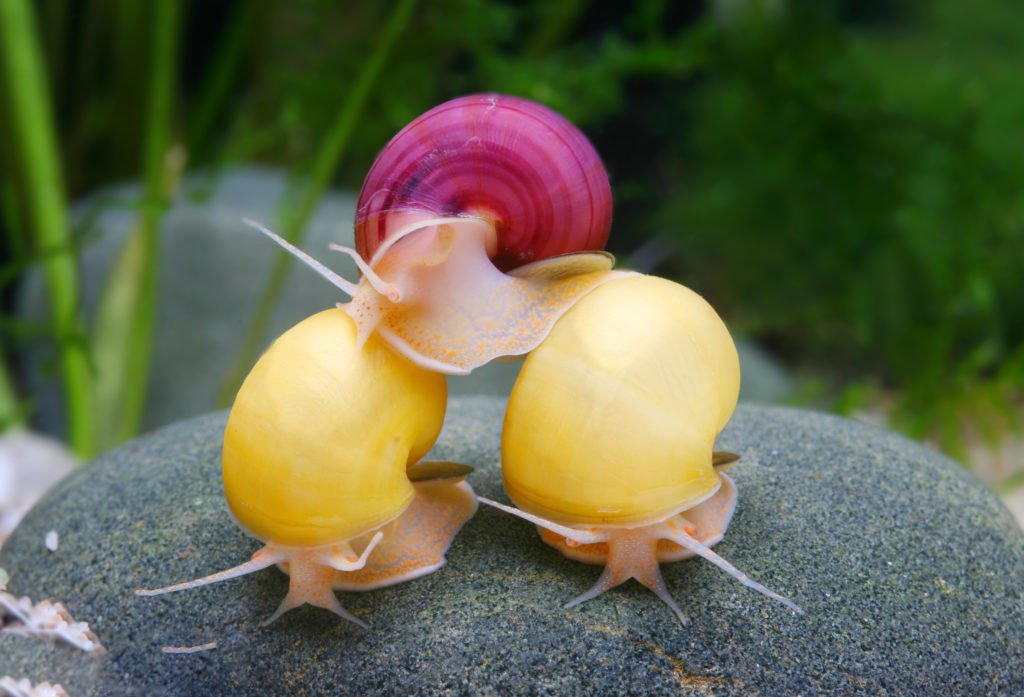
Many people keep snails not only for beauty but also for cleaning the aquarium. Gastropods feed on algae, and, making their leisurely voyage across the glass, they eat up the green coating perfectly.
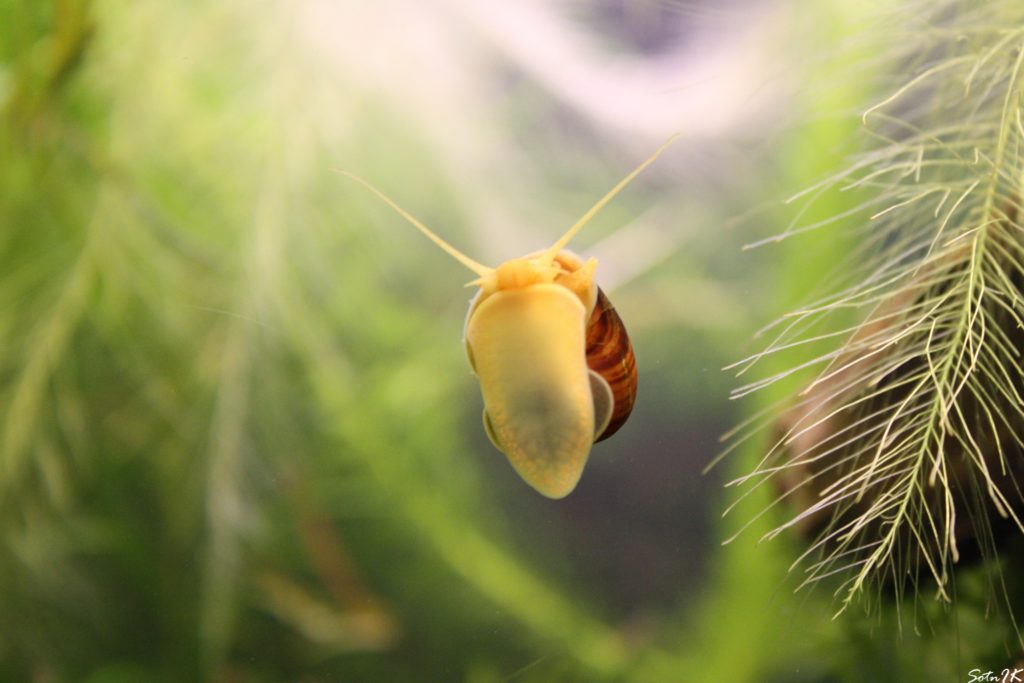
Beginner aquarists are often concerned with the following questions:
How long do snails grow and live?? Not only do mollusks gain size incredibly quickly during the first month of life, but they continue to slowly increase until death, which occurs differently in each species. On average, they live from 1 to 10 years.
But how can you tell if an aquarium snail is dead? Usually, we see animals walking on glass, stones, and algae. If you notice a shell but nobody, could you check whether the shell is closed? The creature likely went to the rainbow if the plug was not pressed against the exit. This fact can also be determined by smell, but the method suits incredibly original ones.
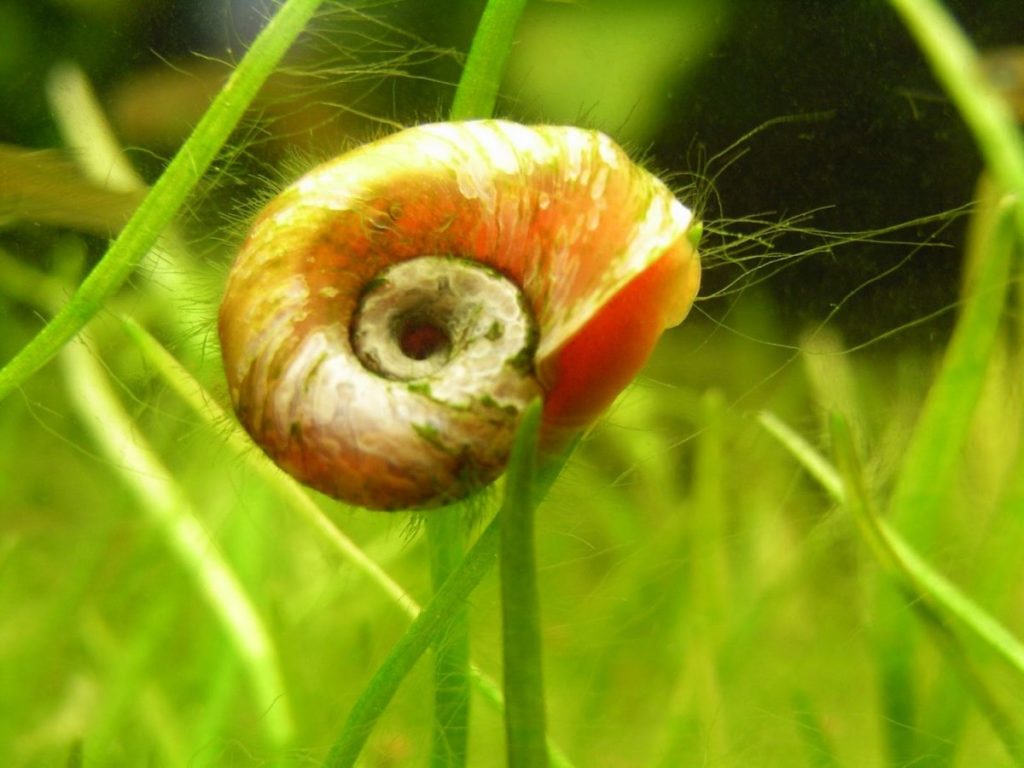
Can aquarium snails live without water? Some species, such as ampullaria, do well without it for 40 hours. However, some snails tend to crawl out of the jar (some lay their eggs this way), so you will need a lid to keep such species.

Despite the unpretentiousness of mollusks, they have several weak points. The biggest problem is that aquarium snails need relatively hard water. A calcium-rich environment allows gastropods to form solid and beautiful shells. With a lack of calcium, shell coils are poorly formed, and existing ones become thinner.
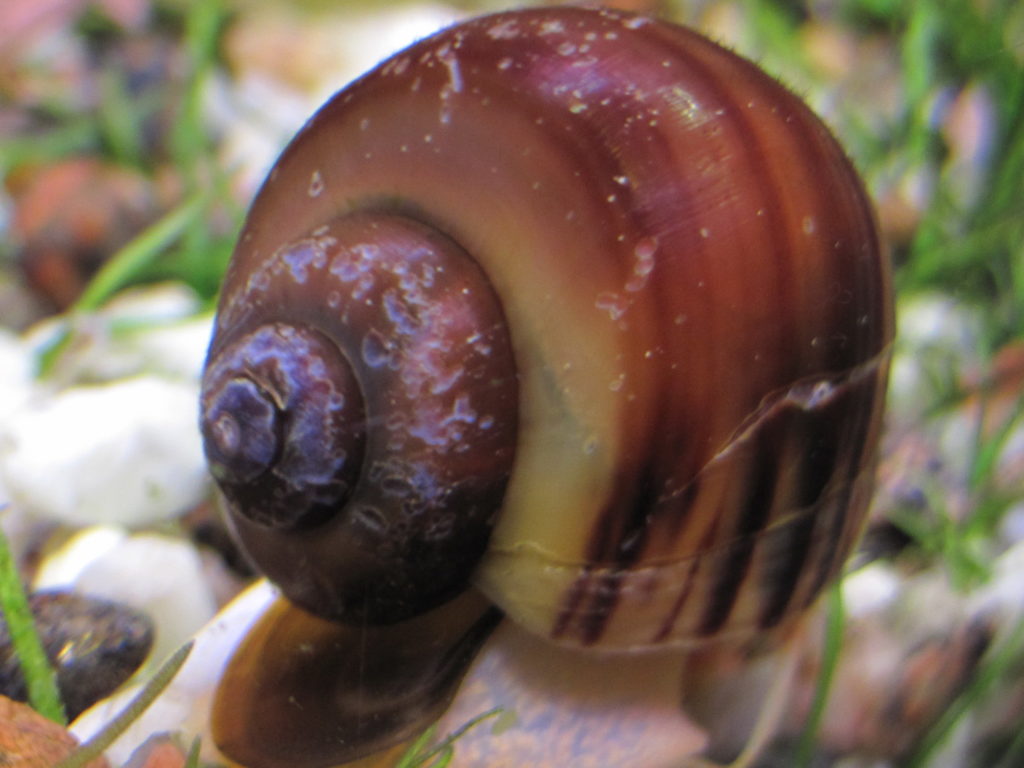
Have you ever seen a snail fall to the bottom? Nothing terrible will happen to a standard sink, but if it is not strong enough, dents and chips will form and disfigure the house’s surface. If the situation does not change, the snail is doomed.
The optimal pH for all gastropods is 7-8.
Also, tropical snails cannot tolerate low temperatures. They will still survive a short drop to 18 degrees, but no more. In addition, all owners of shells have poor eyesight, and they move like tanks according to the principle: I see the target, but I don’t see obstacles. Sometimes, they can escape from the aquarium, fall, damage the shell, or dry out completely if you do not return them home in time. Such incidents happen mainly at night, and experienced aquarists know well what the characteristic “smack” on the floor means. Therefore, to be safe, cover the water with a lid.
What to feed aquarium snails
Almost all gastropods are herbivores, except Helena, which feeds on its kind. Also, gastropods do not disdain leftover food from other fish or detritus. Detritus is dead organic matter that will inevitably appear in your jar. It is not like God eating something, but aquarium snails eating it.

Yet the main diet is microalgae and higher plants. Depending on the ratio of the components, the snail will either sleep peacefully on the algae or become a malicious devourer of everything it manages to reach; even fish fry may be in danger.
If you notice such pranks, you can diversify the snail food. These could be fresh lettuce leaves, of which nothing will be left in the morning. They also readily gnaw on cooked pieces of zucchini or cucumbers and leaves of young cabbage.
How do aquarium snails reproduce?
Both small and large aquarium snails can be either dioecious or hermaphrodite. In the first case, everything is clear. Usually, snails are purchased immediately in a bunch, and further reproduction does not present any problems. The second species can be reborn if the balance of the sexes in the aquarium is disturbed. Moreover, any snail can constantly bring eggs once fertilized.

Snail caviar (eggs) are so small that they blend into the surrounding background, and sometimes, it can be challenging to notice the future formidable army. Gastropods multiply exponentially, and one day, you will find that the mollusks have become the dominant race in the aquarium.

Overdoing it with snails can lead to undesirable consequences:
- Water pollution. Although the slow movers clean the jar, they pollute it themselves. Their area has a detrimental effect on both the fish and themselves. As a result, the snails die, which causes even more trouble.
- Emergencies. Yes, it is a snail that can destroy your expensive filter. In search of food, it can easily be carried to the wrong place. And they can also gnaw clean the plants you planted with love.
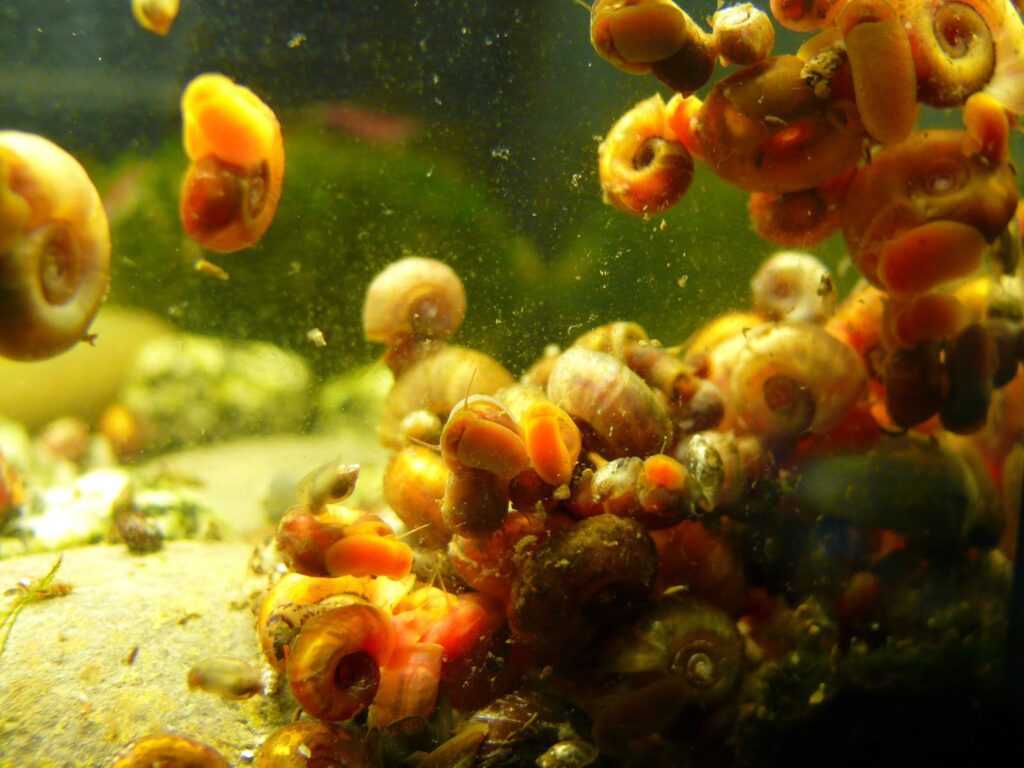
So that you know, the emergency must be dealt with. How? Read on.
How to get rid of aquarium snails
In small doses, aquarium snails are cute and darling, helping to clean the jar and maintain bio balance. However, only some people can control the birth rate of gastropods with tricks. Several time-tested techniques will come to the rescue:
- Catch an enemy with your hands. This is the simplest method suitable for large species that do not reproduce quickly. However, it is entirely useless against coils.
- Make a trap. This method is perfect for coils. You need to attach a lettuce leaf to the fishing line and lower it into the aquarium in the evening. Turn on the light at night, and you will see that the snails in your aquarium are like stars in the galaxy. You need to pull out the sheet and do the catch as you please. Of course, you will not get rid of all the gastropods, but if you regularly repeat this operation, then you can regulate the number. A trap for aquarium snails can be made with your ,” hands and in the form of a plastic bottle, glass, etc., filled with snail food.
Video: how to make a snail trap
- Restart the aquarium. This is a troublesome task, but sometimes useful. The fish move, the soil boils, the glass is washed, and the plants change (but this is not a guarantee, as you remember).
- Cheat up. Almost all types of snails die when copper-containing preparations are added to the water. But this is a perilous step because not only can other inhabitants die, but you also do not entirely remove all the shells with decomposing contents.
- Launch the cannibals. I’m not kidding. There is one species – Helena – that feeds on its relatives. And this is a way out because, with a low reproduction rate, helenas tirelessly suck prey out of the shell with their proboscis. The only thing is that Helens cannot have breakfast with a more enormous snail than themselves, but you can quickly get them out of the water. With a lack of natural prey, Helena quickly switches to other types of food: they eat dead fish and fish food. You can even specially throw them some coils – the Helens will only thank you. There are also aquarium fish that eat snails. These are loaches, tetradons, macropods, and cichlids. But snails can cause harm to axolotls.
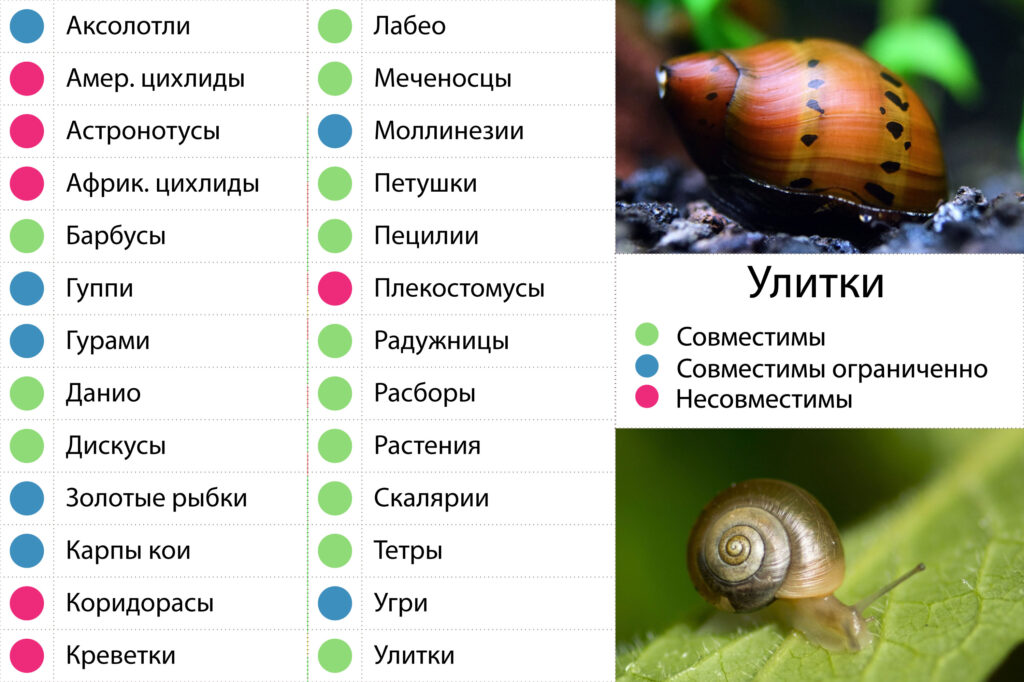
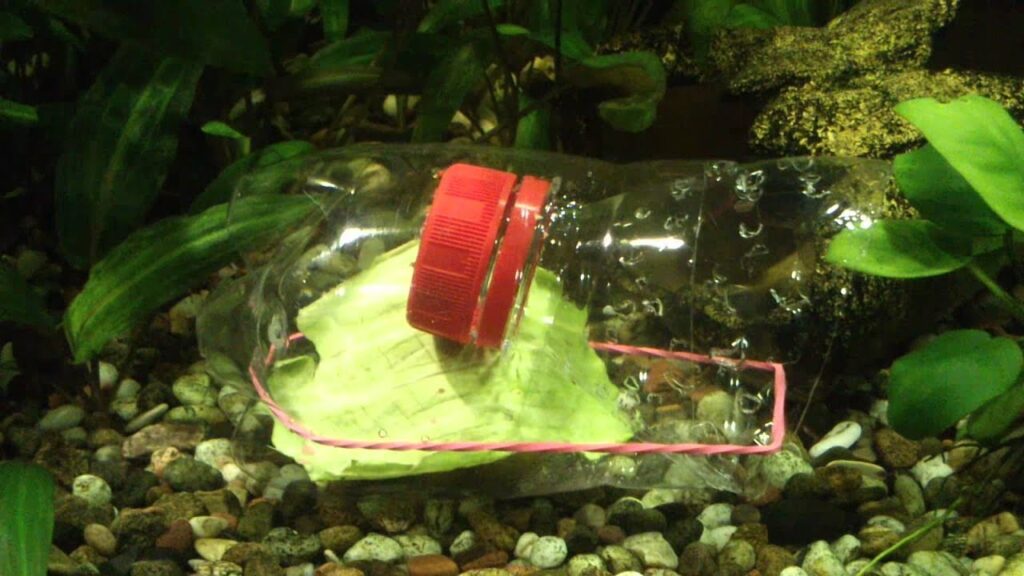
When introducing snails into the aquarium, please make sure they do not fall with the lid up. Otherwise, they will not be able to take the correct position and will die of hunger.
Varieties of aquarium snails
There is quite a wide variety of snail species, and you can always choose one or several for your aquarium.
Video about myths about snails
Aquarium ampularia snail. A fairly large species native to South America. Quite thermophilic and sensitive to the oxygen content in water. When there is not enough of it, they rise to the surface. Individuals are dioecious, and eggs are laid above water. In order for snails to reproduce, the water level must not reach the edge by 15 cm. Yellow aquarium snails live up to three years.

Aquarium snail coils. These are the simplest and most famous of the gastropods. The coil can be distinguished by its shell, twisted in a vertical plane. The color of the shellfish varies from brown to red-brown. They actively reproduce, which leads to overpopulation. However, the livestock is perfectly regulated with the help of Helen.
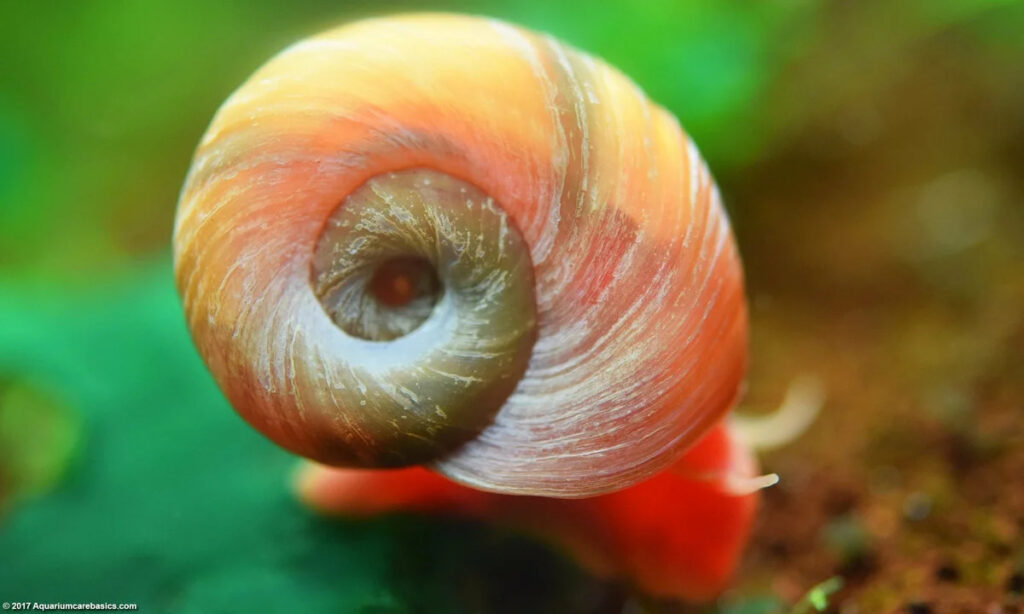
Aquarium snails Physa. Dark, thin-shelled mollusks native to both Americas. Physes, like coils, multiply extremely quickly. However, unlike the latter, they also destroy plants. But even here Helena’s good old friends will come to the rescue.

Aquarium snail marise. Its shell is similar to a coil, but there are dark stripes along its entire length. The snail is quite large and voracious. At the same time, plants are at risk. Gastronog should be fed regularly. The striped aquarium snail is dioecious, loves warm water and regularly escapes.

Aquarium melania snails. This is already an African-Asian guest, living on the ground and digging through it. In fact, this is a very useful species, since uprooting the soil (sand, clay substrate) has a beneficial effect on the life of plants. In addition, melania does not affect either flora or fauna. And they will not require any special conditions of detention from you. And if there is a lack of oxygen, the gastropods will simply crawl out onto land. The population is also regulated by the lifesaver Helena.
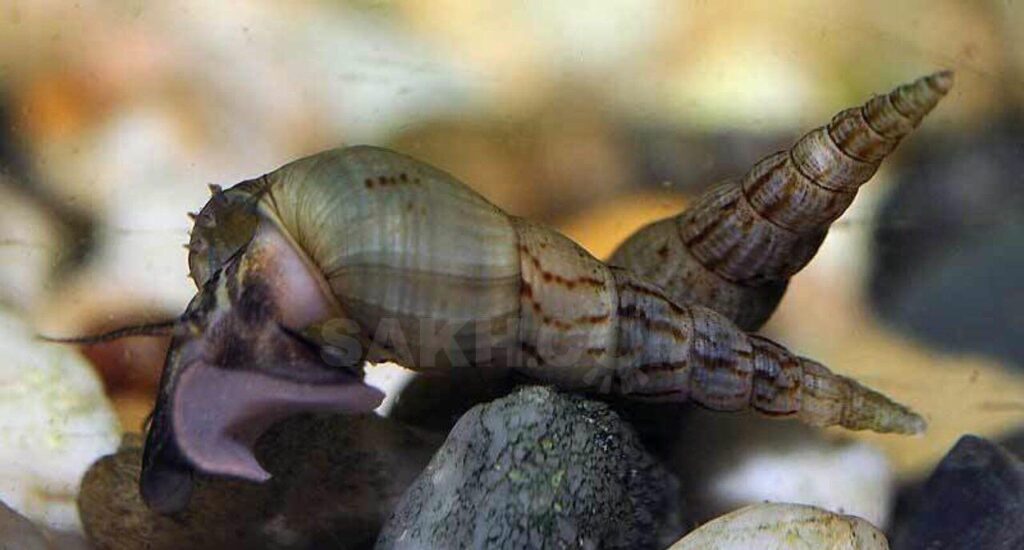
Aquarium snail Helena. And here is our Asian savior.. This is a small snail, and when it crawls along the glass, you can see something like a proboscis, which it puts in front of itself and turns it in different directions. This hose sucks out the victim. Snails are dioecious and live up to 2 years. Helenas need sandy soil to burrow into after a snack.
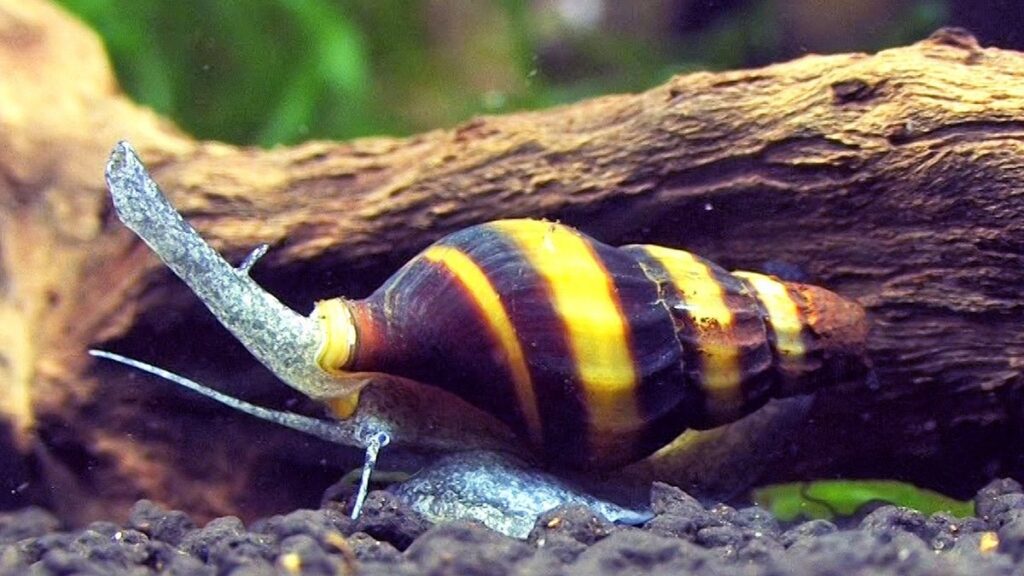
Aquarium snail Hercules (aka brotia, aka pagoda). A very beautiful species native to Myanmar. The spikes on the shell give the snail a resemblance to a pagoda, and for its impressive size it is called a Hercules. Peaceful, infertile, dioecious. They love warmth and flow, but they won’t eat anyhow. Their main food is microalgae. Brotia need to be fed, and then they will not touch higher plants.

Neretina. Just gorgeous snails that came to us from the tropics. The beautiful appearance is more than compensated by the “disadvantages”:
- Heat-loving
- They breed only in salt water
- Love fresh running water
In other words, you can’t put them in a simple aquarium. Neretinas have many subspecies and all of them are brightly colored. The red aquarium snail is especially popular with us.
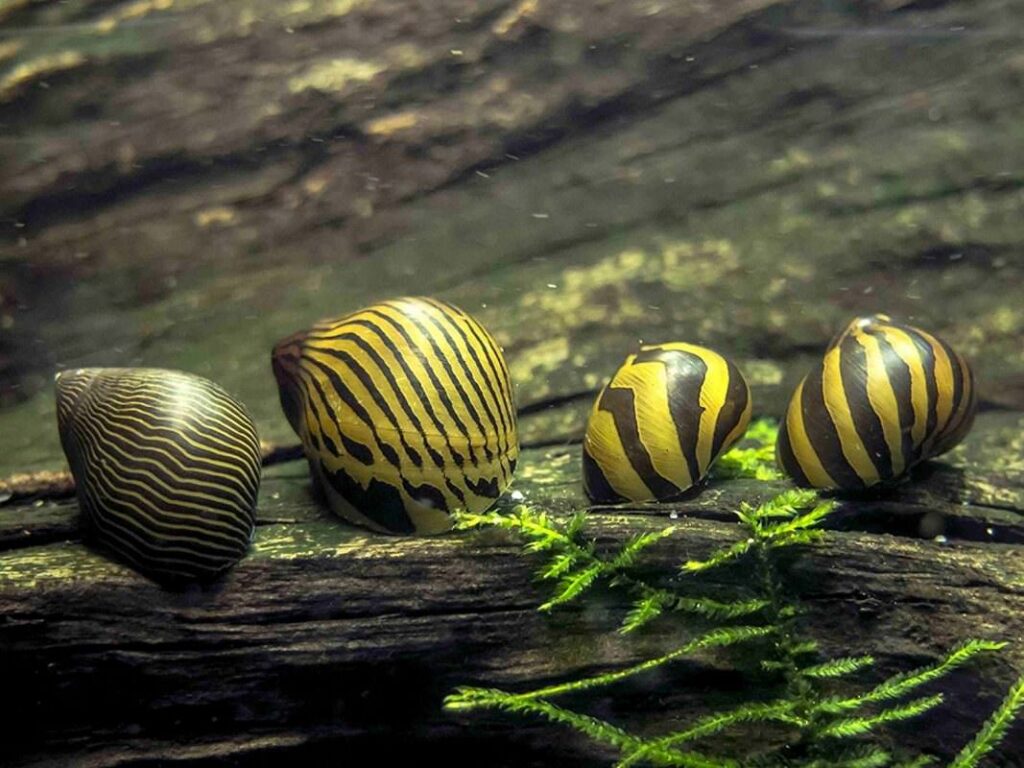
Aquarium snail devil’s thorn. A species that has appeared among us relatively recently. It has a beautiful dark shell up to 9 cm long. It breeds only in sea water, as it came from the Philippines. Naturally, they are thermophilic. They say its name comes from the fact that after death it exudes a truly devilish aroma.
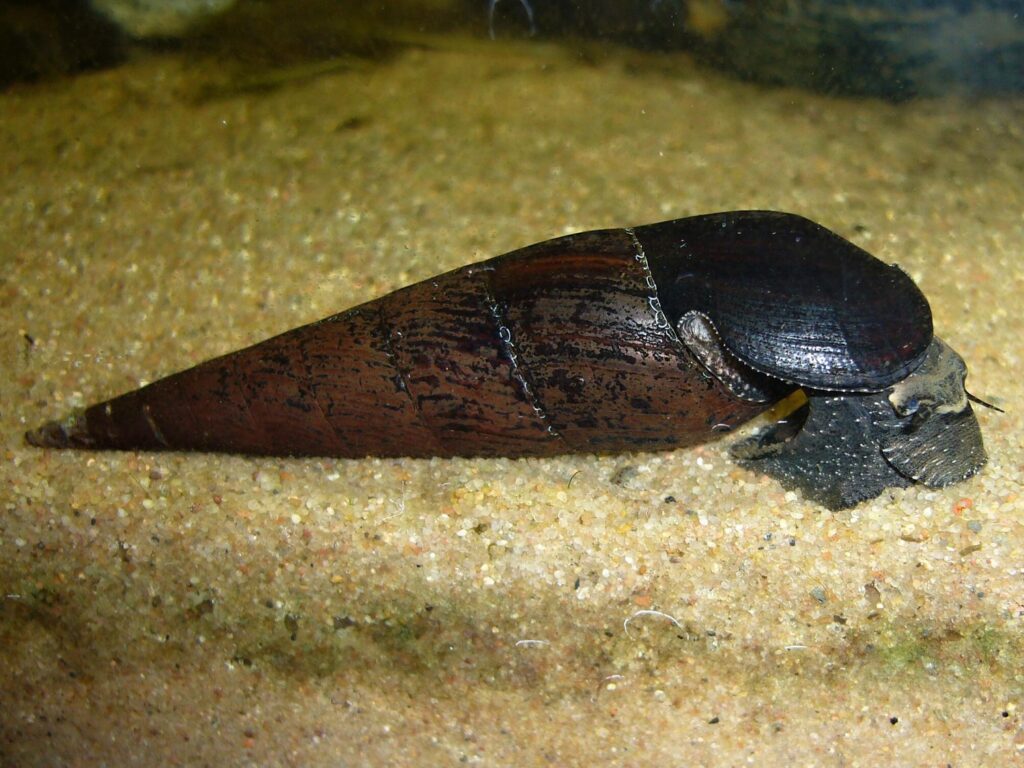
Aquarium snail helmet (helmet). Another name is black neretina. It has all the habits and conditions of detention characteristic of this species.

Video about aquarium snails




